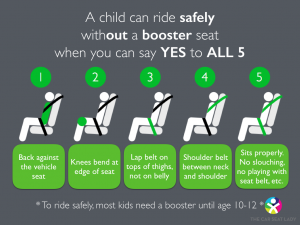Car Seat Safety During National Safety Month
June is National Safety month, a great opportunity to brush up on simple ways to keep you and your children safe at home, while traveling, in the car, outside, and at school.
Road injuries are the leading cause of unintentional deaths to children in the United States. Correctly used child safety seats can reduce the risk of death by as much as 71 percent. However, 73 percent of car seats are not used or are not installed correctly. Safe Kids Worldwide offers a great parent checklist you can use at home to make sure your child properly secured in his or her car seat here.
You can also learn how to install and have your car seat checked for free in places like fire stations, police stations and other events in your area here.
When purchasing a car seat for your little one, make sure you know it’s history. Once a car seat has been in an accident, or has missing or damaged pieces, it needs to be replaced.
Be a good example-wear your seat belt! When adults buckle up, children are more likely to follow this practice into adulthood as well,
Never leave your child alone in a car, even for a moment. Temperatures in a car on a summer day, especially in the Florida heat, can rise 20 degrees and cause heatstroke in the time it takes for you to run in and out of the store.
Make sure your child is riding in the back seat, it’s the safest place for him or her. If you have an older child, he or she should not be riding in the front passengers seat until age 12 or older.
Infants and toddlers should be riding in rear facing car seats until the age of one and at least 20-22 pounds. For children over 40 pounds, a booster seat is recommended. This resource offers a great 5-step test to see if your child is ready to ride without a booster seat. Often, children are 10-12 years old before they are tall enough to ride.
Most importantly, never text and drive, and keep talking on the phone, even hands-free, to a minimum.

